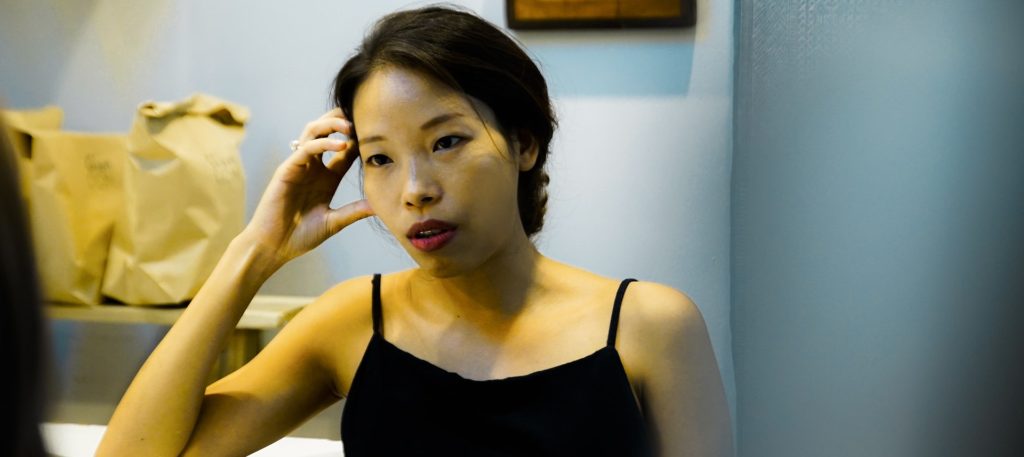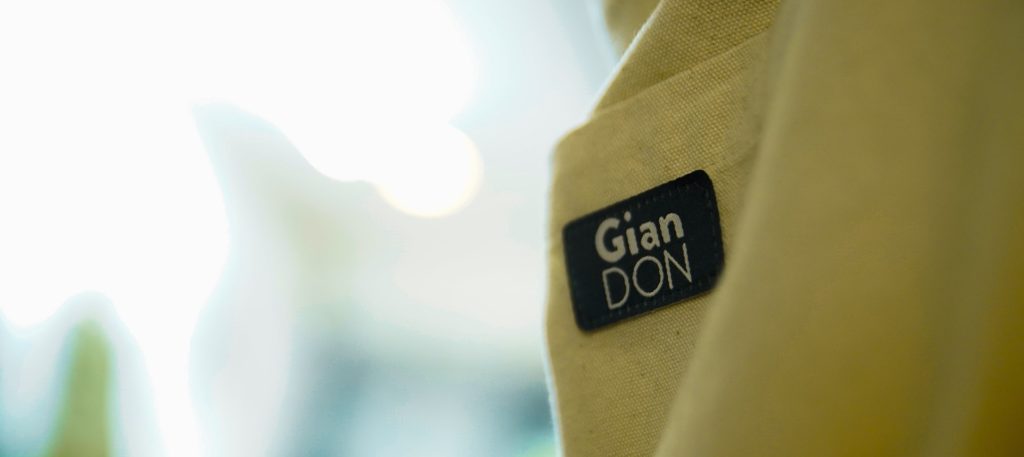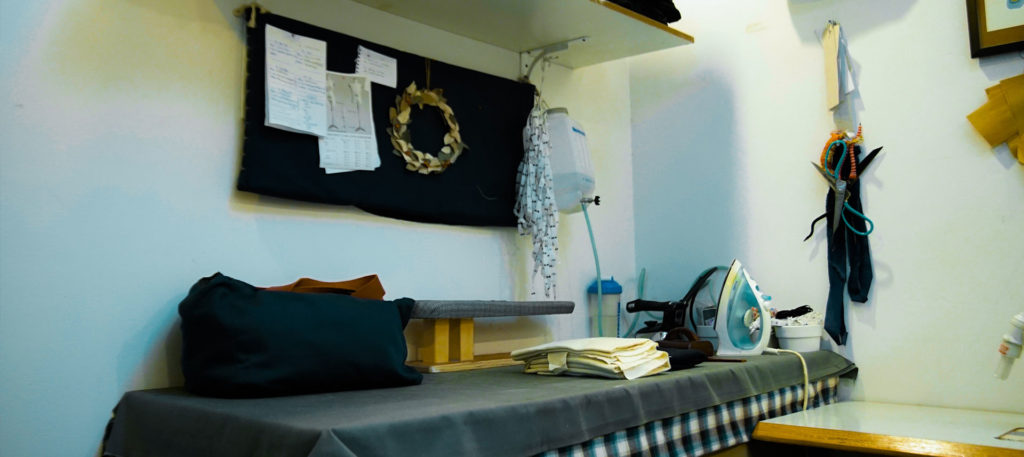Vietnam’s Most Inspired: Gian Don
There are many worrying facts that we could start telling you about the clothing industry. How it’s polluting the air and water, the terrible conditions it forces people to work in, or the sheer volume of items that get thrown away every minute.
At Son Tinh, however, we don’t want to dwell on the impending doom hanging in the air. We believe it’s better to offer solutions.
Heading down a quiet lane in the Tay Ho area of Hanoi, ducking between the rustling shadows of the trees and the rhythmic splashing of West Lake, you’ll find a small shop working hard to change the way Hanoians dress.
Dieu, owner and designer at Gian Don (link), is a consistent representative of her brand, always wearing elegantly designed garments made from locally sourced materials.
“I like to wear clothes made from sustainable fabrics,” Dieu tells us. “But the current market for sustainable designers tends to be very expensive and oversized. I usually end up looking like I’m wearing a box.”
Dieu wasn’t alone. She came across many women who, like her, wanted environmentally-friendly clothing that fits a more petite body type. This sparked the idea that went on to be Gian Don, a clothing brand focused on quality and sustainability.
“But the current market for sustainable designers tends to be very expensive and oversized. I usually end up looking like I’m wearing a box.”

“I would search for the best fabrics in markets like Hom market, Ninh Hiep fabric market. Throughout the journey, I was always asking questions.”
Choosing the right materials
Dieu has focused on sourcing the correct fabrics for her clothing from the start. “I would search for the best fabrics in markets like Hom market, Ninh Hiep fabric market. Throughout the journey, I was always asking questions,” she says. Living in a country that can regularly swelter in temperatures averaging between 35 and 40-degree heat, the feel of the fabric can be as important as the look. She began to favour natural fabrics like linen, with its ability to absorb sweat, while also maintaining warmth for the winter. It’s also quick to dry and environmentally-friendly. Unlike many materials that are detrimental to our planet, like nylon and polyester, which are both non-biodegradable and inherently unsustainable, linen’s footprint is pretty minimal. It will only take around three to five months for linen to decompose, for example, whereas it takes synthetic fabrics for hundreds of years. Consider that a nice image of a circular production that this creates. Made out of natural fibers from the flax plant, linen is made without pesticides and quickly bio-degrades back into the earth once discarded.
Gian Don means ‘Simple’
If you wander into Gian Don on a quiet morning at the weekend, there’s a good chance you’ll find yourself in one of their workshops. There’s a range of classes available but Dieu specifically points out that her sewing classes are there to remind people of the “magic of the hands”. These classes aim to remind each person that they themselves can fix their clothes, preventing unnecessary waste and production. Throughout the process, Dieu endeavours to maintain simplicity and quality in everything she creates. “I want to be the direct controller of all production stages in Gian Don,” She tells us. “I go slowly but ensure product quality.” While the approach and production may have a focus on simplicity, nowhere is this found more than in Dieu’s designs. By working on simple, timeless styles and utilising durable materials, Dieu believes that the owners of her garments will have less cause to throw them away. This would effectively put an end to the one year lifespan created by the fast fashion industry, where products are made according to the latest fashion, and are thrown out as quickly as their mother trend came about.“I want to be the direct controller of all production stages in Gian Don,” She tells us. “I go slowly but ensure product quality.”

Dieu herself uses a range of fabrics, including natural materials and cotton, but you could add hemp and recycled fabric to the eco-list.
Linen’s limitations
While linen may have some very significant benefits, particularly for those of us living in sticky climates, the whole world isn’t quite ready to be wrapped in it. Unlike many non-sustainable materials, linen lacks give, opting to hug the body instead. This makes tailoring essential if you want a good fit. Most brands don’t tend to do this, however, and choose instead to design their linen items larger than necessary. There are other limitations to the product too, such as the colour. Due to their natural dying process, linens remain fairly neutral in hue, which may not be to everyone’s taste. It is, however, aligned perfectly to Dieu’s taste. She explains how she likes the moderate hug that linen gives her, and how it tends not to swamp her. She also enjoys the neutral colours, finding them very befitting of the Gian Don image. For anyone uncertain of these qualities, who still hopes to live a more eco-friendly life, fortunately, linen is not the be-all and end-all of the sustainable fabrics. Dieu herself uses a range of fabrics, including natural materials and cotton, but you could add hemp and recycled fabric to the eco-list, too.
Education for better buying
While we promised not to burden you the information about the fashion industry’s environmental impact, we do agree with Dieu that education inspires change. So if you want to know more, check out this article on the sheer volume of pollution created by the fashion industry. You may also be interested in learning about how synthetic fabrics cause micro-plastic pollution. And like Dieu, you might be interested in getting involved in Less Waste Vietnam. If you’re a Netflixer give The True Cost a watch and don’t forget to fill your boots with a catalogue of information over at the Fashion Revolution’s website.
Stories
